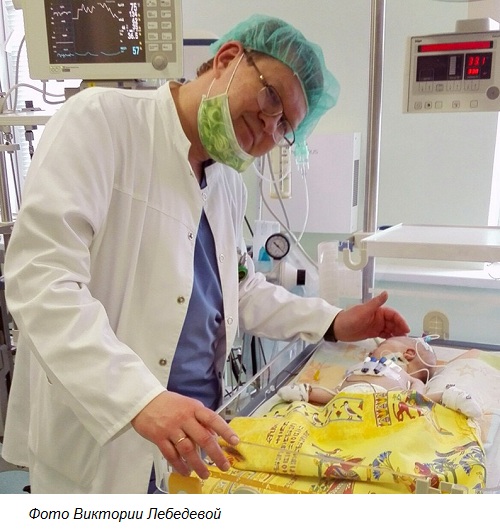 Samir has already spent his first month in the intensive care unit of the Children’s Surgery National Applied Research Hospital. The most severe congenital malformation, a syndrome of a hypoplasia of the left divisions of the heart, doesn’t allow him to be near his Mom and Dad. Cardiac surgeons have only gone half way: two operations have been performed. There are two more ahead.
Samir has already spent his first month in the intensive care unit of the Children’s Surgery National Applied Research Hospital. The most severe congenital malformation, a syndrome of a hypoplasia of the left divisions of the heart, doesn’t allow him to be near his Mom and Dad. Cardiac surgeons have only gone half way: two operations have been performed. There are two more ahead.
The parents of the baby new about the diagnosis at the 12th week of the pregnancy. The specialists from the NARH Mother and Child joined in immediately. Samir was born in the Center, then the boy was urgently transferred to the Children’s Surgery National Applied Research Hospital.
“With the diagnosis like this, you need to operate during the first month, because in fact the child has only half of the heart,” says Dmitry Leskovsky, head of the Department of Anesthesiology and Reanimation, Intensive Care, Extracorporeal Circulation of th Children’s Surgery National Applied Research Hospital (on the photo). “The boy was born 2500g., he received support before the beginning of surgical treatment.”
The first operation was the bilateral grafting of the branches of the pulmonary artery. The condition for the next stage was weight gain: Samir was “grown up” to 3,035 g. The second intervention, correction of the syndrome of hypoplasia of the left heart, is the most difficult. Norwood procedure sets the beginning of the creation of a two-chambered heart – two circles of blood circulation are formed. The team headed by Konstantin Drozdovski, the director of the Children’s Surgery National Applied Research Hospital, chief visiting pediatric cardiac surgeon of the Ministry of Health Care, operated more than 6 hours.
“Intervention requires not only the jewelry work of surgeons, but anesthesiologists and resuscitators as well,” notes Dmitry Leskovsky. “For medical professionals this means to be at the tip of the spear … We worried for five days after the operation. Then the baby’s condition returned to normal, he breathes himself.” “Now the family is waiting for the next stage of treatment,” comments Konstantin Drozdovski. “We plan to conduct Glenn’s operation before the baby is one-year-old. When the child will be able to walk confidently, we expect to perform the fourth operation- Fontaine procedure. We will adapt the little heart to normal activity in four stages.” There is a tendency in increase of children with congenital malformations. As for heart defects, there are an average of 9 cases per 1,000 newborns.
Taken from the site www.MedVestnik.by
